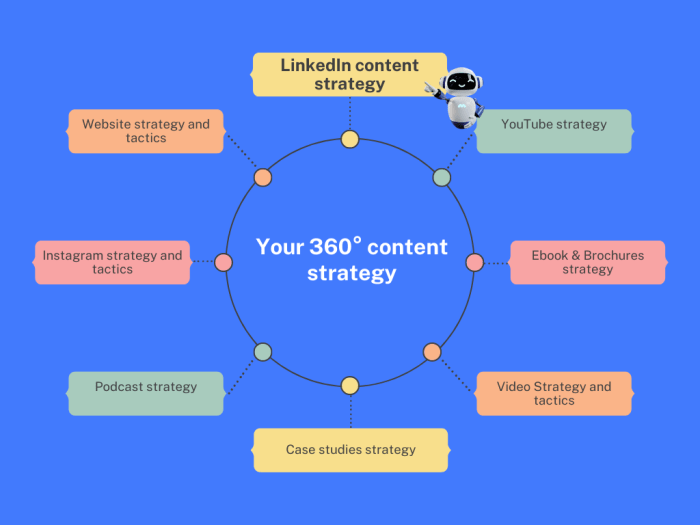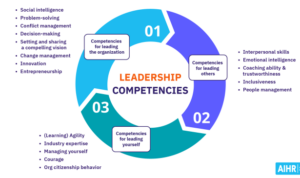Creating a LinkedIn Content Strategy opens the door to a world of endless possibilities in the realm of professional networking and advancement. Dive into this guide filled with tips and tricks to elevate your LinkedIn game to new heights.
Whether you’re a seasoned professional or just starting out, mastering the art of LinkedIn content strategy can set you apart from the crowd and pave the way for unprecedented success.
Introduction to LinkedIn Content Strategy
LinkedIn content strategy is like the secret sauce for professionals and businesses looking to shine bright on this platform. It’s all about planning and creating content that resonates with your audience, boosts your visibility, and helps you achieve your goals.
Why LinkedIn Content Strategy is Important
Having a solid content strategy on LinkedIn can make all the difference in how you connect with your audience and stand out from the crowd. It helps you build credibility, establish thought leadership, and grow your network. Plus, it can drive traffic to your website, generate leads, and even land you that dream job or client.
- Creating engaging and valuable content that speaks to your target audience
- Building relationships and trust with your connections
- Showcasing your expertise and establishing yourself as a go-to resource in your industry
Remember, consistency is key when it comes to your LinkedIn content strategy. Keep showing up, keep providing value, and watch your influence grow.
Setting Goals for Your LinkedIn Content Strategy
Setting clear goals for your LinkedIn content strategy is crucial to ensure that your efforts are focused and impactful. Without clear objectives, it can be challenging to measure the success of your content and make necessary adjustments to improve performance.When setting goals for your LinkedIn content strategy, it’s essential to consider what you want to achieve and how your content can help you reach those objectives.
Some examples of specific goals you might set include:
Increasing Engagement
- Increasing the number of likes, comments, and shares on your LinkedIn posts.
- Boosting the overall engagement rate on your LinkedIn Company Page.
- Encouraging more meaningful interactions with your audience through thought-provoking content.
Generating Leads
- Driving traffic to your website or landing pages through compelling calls-to-action in your LinkedIn posts.
- Capturing contact information from interested prospects through lead generation forms on LinkedIn.
- Nurturing leads and guiding them through the sales funnel with targeted content.
Building Brand Awareness
- Increasing brand visibility and recognition among your target audience on LinkedIn.
- Showcasing your company culture, values, and unique selling propositions through engaging content.
- Establishing your brand as a thought leader in your industry by sharing valuable insights and expertise.
To align your content with these goals effectively, it’s important to tailor your messaging, visuals, and posting schedule to resonate with your target audience. Analyze the performance of your content regularly, track key metrics, and adjust your strategy as needed to optimize results and achieve your objectives.
Understanding Your Target Audience on LinkedIn: Creating A LinkedIn Content Strategy

Knowing your target audience on LinkedIn is crucial for creating a successful content strategy. By understanding who you are trying to reach, you can tailor your content to meet their specific needs and interests, ultimately increasing engagement and building meaningful connections.
Identifying and Analyzing Your Target Audience
- Start by looking at your current connections on LinkedIn to get a sense of who is already engaging with your content.
- Utilize LinkedIn Analytics to gather data on demographics, interests, and behaviors of your audience.
- Conduct surveys or polls to gather feedback directly from your audience on what type of content they find valuable.
- Research industry trends and competitors to understand the broader landscape of your target audience.
Tailoring Your Content to Resonate with Your Target Audience
- Create content that speaks directly to the pain points and challenges of your target audience, offering solutions and valuable insights.
- Use language and tone that resonates with your audience, whether it’s formal and professional or more casual and conversational.
- Include visuals and multimedia elements that appeal to your audience’s preferences and enhance the overall user experience.
- Engage with your audience through comments, messages, and polls to foster a sense of community and connection.
Types of Content to Include in Your LinkedIn Strategy
When it comes to creating a successful LinkedIn content strategy, it’s essential to include a variety of content types to keep your audience engaged and interested. Here are some types of content that perform well on LinkedIn and tips on how to diversify your content to maintain audience engagement.
1. Articles
- LinkedIn articles are a great way to share in-depth insights, industry knowledge, and thought leadership with your network.
- Ensure your articles are well-written, informative, and provide value to your audience.
2. Videos
- Video content is highly engaging and can help you connect with your audience on a more personal level.
- Create videos that showcase your expertise, share tips and advice, or provide behind-the-scenes looks at your business.
3. Infographics
- Infographics are a visually appealing way to present data, statistics, or complex information in an easily digestible format.
- Use infographics to highlight key points, trends, or comparisons relevant to your industry.
4. Repurposing Content
- Repurposing content involves taking existing content and adapting it into different formats to reach a wider audience.
- For example, you can turn a blog post into a video, create a series of social media posts based on a whitepaper, or transform a webinar into an infographic.
Content Creation and Scheduling
When it comes to creating killer content on LinkedIn, you gotta keep it engaging and on point. Consistency is key, my friend! And don’t forget to schedule your posts strategically to get the most bang for your buck.
Best Practices for Creating Engaging Content on LinkedIn
- Use eye-catching visuals to grab attention.
- Write compelling copy that speaks to your audience.
- Include relevant hashtags to increase visibility.
Importance of Consistency in Posting Content
Consistency breeds trust and keeps your audience coming back for more. Don’t leave them hanging!
Tips for Scheduling Content Effectively
- Use analytics to determine the best times to post for your target audience.
- Batch create content ahead of time to stay ahead of the game.
- Experiment with different posting frequencies to see what works best.
Leveraging LinkedIn Features for Your Content Strategy
In today’s digital age, leveraging LinkedIn features is crucial to enhancing your content strategy and reaching a wider audience. By making the most of tools like LinkedIn Live, LinkedIn Stories, and LinkedIn polls, you can engage with your followers in a more interactive and dynamic way.
Using LinkedIn Live for Engaging Content
LinkedIn Live allows you to broadcast live video content to your network, providing a unique opportunity to connect with your audience in real-time. Businesses can use this feature to host Q&A sessions, product launches, behind-the-scenes glimpses, and industry expert interviews. By leveraging LinkedIn Live, you can humanize your brand and create a more personal connection with your followers.
Utilizing LinkedIn Stories for Timely Updates
Similar to other social media platforms, LinkedIn Stories enables you to share short-lived photo and video updates with your network. Businesses can use this feature to showcase daily activities, share quick tips, promote events, and provide sneak peeks into upcoming projects. By incorporating LinkedIn Stories into your content strategy, you can keep your audience engaged and informed in a casual and interactive way.
Engaging Your Audience with LinkedIn Polls
LinkedIn polls are a valuable tool for gathering feedback, conducting market research, and increasing engagement with your network. Businesses can use polls to ask industry-related questions, gather opinions on new product ideas, or spark conversations around trending topics. By leveraging LinkedIn polls, you can encourage active participation from your followers and gain valuable insights that can inform your content strategy.
Optimizing Your LinkedIn Profile for Maximum Impact
In addition to utilizing these features, it’s essential to optimize your LinkedIn profile to support your content strategy. Make sure your profile is complete, professional, and reflective of your brand identity. Use relevant s in your headline and summary to improve searchability, and regularly update your profile with fresh content to keep your audience engaged. By optimizing your LinkedIn profile, you can establish credibility, build relationships, and drive traffic to your content.
Measuring Success and Iterating Your Strategy

Measuring the success of your LinkedIn content strategy is crucial to understanding what is working well and what needs improvement. By tracking key metrics, analyzing data, and making adjustments based on performance, you can ensure that your content is effectively reaching your target audience and driving engagement.
Key Metrics to Track
- Engagement Rate: Measure the number of likes, comments, and shares your posts receive relative to the number of followers you have.
- Click-Through Rate (CTR): Track the percentage of people who click on links in your posts to visit your website or other content.
- Follower Growth: Monitor the growth of your follower count over time to gauge the effectiveness of your content strategy.
- Lead Generation: Measure the number of leads or conversions generated from your LinkedIn content.
Analyzing Data and Adjusting Strategy
- Regularly review your analytics to identify trends and patterns in your content performance.
- Look for content that is resonating with your audience and replicate successful strategies.
- Identify underperforming content and make adjustments to improve engagement and reach.
- A/B testing can help you determine what type of content or messaging is most effective with your audience.
Data-Driven Insights for Improvement, Creating a LinkedIn Content Strategy
By analyzing data and gaining insights into what works best for your audience, you can refine your content strategy to drive better results.
Using data-driven insights, you can tailor your content to better meet the needs and interests of your target audience. For example, if you notice that video content performs better than text posts, you can focus on creating more video content to increase engagement and reach on LinkedIn.
